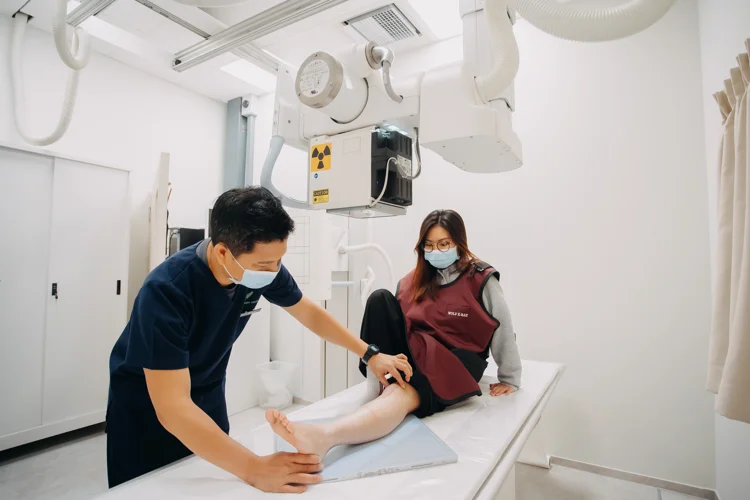UV Index Singapore
UV Index Singapore



The Ultraviolet (UV) Index in Singapore is relatively high due to its proximity to the equator, which means that the
sun's rays are more intense. It is crucial to protect yourself from the sun in
Singapore by staying indoors during peak UV hours, wearing protective clothing, and applying
sunscreen with a high Sun Protection Factor (SPF).
Over exposure to the sun's ultraviolet rays can lead to skin
cancer, so it's important to stay protected and aware of the dangers of the sun. Additionally, wearing
sunglasses, hats, and other protective gear can help prevent eye damage.
Our UV Index in Singapore is streamed live from NEA's APIs.
| Time | UV Index |
|---|---|
| This table will automatically update once data from NEA streams in. | |
UV Index Legend
| UV Index | Advice |
|---|---|
| 0-2 | Low: No protection needed |
| 3-5 | Moderate: Some protection against sunburn needed |
| 6-7 | High: Some protection against sunburn needed |
| 8-10 | Very High: Extra protection against sunburn needed |
| 11 and above | Extreme: Extra protection against sunburn needed |
UV Index History in Singapore (2023-2025)
| Month | Average UV Index | Max UV Index |
|---|---|---|
| October 2025 | 3.17 | 11 - Extreme: Extra protection against sunburn needed |
| September 2025 | 3.06 | 11 - Extreme: Extra protection against sunburn needed |
| August 2025 | 2.8 | 10 - Very High: Extra protection against sunburn needed |
| July 2025 | 2.69 | 9 - Very High: Extra protection against sunburn needed |
| June 2025 | 2.65 | 9 - Very High: Extra protection against sunburn needed |
| May 2025 | 2.72 | 10 - Very High: Extra protection against sunburn needed |
| April 2025 | 3.36 | 12 - Extreme: Extra protection against sunburn needed |
| March 2025 | 3.3 | 12 - Extreme: Extra protection against sunburn needed |
| February 2025 | 3.65 | 11 - Extreme: Extra protection against sunburn needed |
| January 2025 | 2.47 | 10 - Very High: Extra protection against sunburn needed |
| December 2024 | 2.7 | 10 - Very High: Extra protection against sunburn needed |
| November 2024 | 2.25 | 11 - Extreme: Extra protection against sunburn needed |
| October 2024 | 2.64 | 11 - Extreme: Extra protection against sunburn needed |
| September 2024 | 3.15 | 11 - Extreme: Extra protection against sunburn needed |
| August 2024 | 2.99 | 10 - Very High: Extra protection against sunburn needed |
| July 2024 | 2.84 | 9 - Very High: Extra protection against sunburn needed |
| June 2024 | 2.37 | 9 - Very High: Extra protection against sunburn needed |
| May 2024 | 2.62 | 11 - Extreme: Extra protection against sunburn needed |
| April 2024 | 3.16 | 11 - Extreme: Extra protection against sunburn needed |
| March 2024 | 4.04 | 13 - Extreme: Extra protection against sunburn needed |
| February 2024 | 3.96 | 12 - Extreme: Extra protection against sunburn needed |
| January 2024 | 2.92 | 11 - Extreme: Extra protection against sunburn needed |
| December 2023 | 2.4 | 11 - Extreme: Extra protection against sunburn needed |
| November 2023 | 2.49 | 10 - Very High: Extra protection against sunburn needed |
| October 2023 | 2.98 | 11 - Extreme: Extra protection against sunburn needed |
| September 2023 | 2.99 | 11 - Extreme: Extra protection against sunburn needed |
| August 2023 | 2.8 | 10 - Very High: Extra protection against sunburn needed |
| July 2023 | 2.65 | 9 - Very High: Extra protection against sunburn needed |
| June 2023 | 2.45 | 8 - Very High: Extra protection against sunburn needed |
| May 2023 | 2.76 | 9 - Very High: Extra protection against sunburn needed |
| April 2023 | 2.36 | 9 - Very High: Extra protection against sunburn needed |
| March 2023 | 3.18 | 11 - Extreme: Extra protection against sunburn needed |
| February 2023 | 3.06 | 11 - Extreme: Extra protection against sunburn needed |
| January 2023 | 2.07 | 9 - Very High: Extra protection against sunburn needed |
Live UV Index Updates Through Telegram
Want to receive live hourly updates about the UV Index through Telegram? Join our Telegram channel now.
Protecting yourself from the sun's ultraviolet rays
Typically, the UV index levels are the highest between 11AM and 3PM. Overexposure to
the sun and UV radiation can cause sunburn, skin and eye damage, premature aging, wrinkling and
even cancer.
The following steps can ensure protection against the sun:
- Apply sunscreen with Sun Protection Factor (SPF) of 30 and above on exposed areas of your body evenly, generously and well
- Wear sun-protective clothing
- Put on a hat to protect your scalp and face
- Avoid prolonged exposure to the sun where possible
- Wear sunglasses to protect your eyes
- Apply lip balm with SPF on your lips
Source: HealthHub
Frequently Asked Questions
The UV Index (UVI) is a measure of the level of UV radiation. It starts from 0 and above, and the higher the UVI, the greater the potential for damage to the skin and eye, and the less time it takes for harm to occur. The UVI, as described by the World Health Organization (WHO), is an important vehicle to alert people about the need to use sun protection.
We use the data from data.gov.sg's NEA APIs. The data is provided as it is.
Based on NEA's data, daily UV index averages range between 6 to 9. This is because of Singapore's proximity to the equator, which results in the sun being directly overhead most of the year and Singapore receiving more direct sunlight.
Generally, a lower UV index means there is minimal risk of sunburn for the average person. However, this varies for individuals and does not completely eliminate the risk of sunburn. If in doubt, do seek a doctor's advice about how much protection you should wear.
Health Screening Clinics in Central Singapore
We provide one stop health
screening services, through with two dedicated clinics located near Tanjong Pagar (EW13) and Orchard
Boulevard (TE15) MRTs.
Our facilities are equipped with advanced diagnostic technologies including Chest X-Ray, Ultrasound, Bone
Mass Density, and Treadmill Stress Test machines. Additionally, one of our clinics is outfitted with a
CT Scan, enhancing our capability to provide thorough
health assessments. Booking for our patients is done easily through WhatsApp or Phone.






